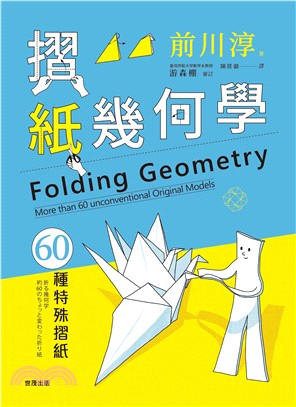Measurement Data Modeling and Parameter Estimation
- 系列名:Systems Evaluation, Prediction, and
- ISBN13:9781439853788
- 出版社:CRC Press UK
- 作者:Zhengming Wang; Dongyun Yi; Xiaojun Duan; Jing Yao and Defeng Gu
- 裝訂/頁數:精裝/553頁
- 版次:1
- 出版日:2011/12/01
商品簡介
Requiring a basic knowledge of linear algebra, computing, and probability and statistics, the book illustrates key lessons with tables, examples, and exercises. It emphasizes the mathematical processing methods of measurement data and avoids the derivation procedures of specific formulas to help readers grasp key points quickly and easily. Employing the theories and methods of parameter estimation as the fundamental analysis tool, this reference:
Introduces the basic concepts of measurements and errors
Applies ideas from mathematical branches, such as numerical analysis and statistics, to the modeling and processing of measurement data
Examines methods of regression analysis that are closely related to the mathematical processing of dynamic measurement data
Covers Kalman filtering with colored noises and its applications
Converting time series models into problems of parameter estimation, the authors discuss modeling methods for the true signals to be estimated as well as systematic errors. They provide comprehensive coverage that includes model establishment, parameter estimation, abnormal data detection, hypothesis tests, systematic errors, trajectory parameters, and modeling of radar measurement data. Although the book is based on the authors’ research and teaching experience in aeronautics and astronautics data processing, the theories and methods introduced are applicable to processing dynamic measurement data across a wide range of fields.
作者簡介
Dr. Dongyun Yi received his BS and MS degrees in applied mathematics and a PhD degree in system engineering in 1985, 1992, and 2003, respectively. Currently, he is a professor in Systems Analysis and Integration. He is now the Director of the Department of Mathematics and Systems Science, College of Science, National University of Defense Technology. He has been engaged in data intelligent processing research for over twenty years. He is in charge of the National Foundation Research Project "The Structural Properties of Resource Aggregation—Analysis and Applications" and also participates in the National Science Foundation of China "Pattern Recognition Research Based on High-Dimensional Data Structure" as a deputy chair. He has co-published two monographs and published more than 60 papers. His research interests include data fusion, parameter estimation of satellite positioning, mathematical modeling, and analysis of financial data.Dr. Xiaojun Duan received her BS and MS degrees in applied mathematics and a PhD degree in system engineering in 1997, 2000, and 2003, respectively. She also had one year of visiting scholar experience at Ohio State University during 2007–2008. Currently, she is an associate professor in Systems Analysis and Integration. She teaches data analysis, systems science, linear algebra, probability and statistics, and mathematical modeling and trains undergraduates as a faculty advisor for participation in the Mathematical Contest in Modeling, which is held by the Society for Industry and Applied Mathematics in the United States. By teaching courses in data analysis, she gained valuable experience and also received suggestions from students on how to better organize materials so as to impart knowledge of data analysis. Her research is funded by the Natural Science Foundation of China, Spaceflight Science Foundation in China. She has published about 30 SCI or EI-indexed research papers. Her research interests cover areas such as data analysis, mathematical positioning and geodesy, complex system test, and evaluation.Dr. Jing Yao received her BS and MS degrees in applied mathematics and a PhD degree in systems analysis and integration in 2001, 2003, and 2008, respectively. Currently, she is a lecturer at the Department of Mathematics and Systems Science, College of Science, National University of Defense Technology. She teaches probability and statistics for the undergraduate level and time series analysis with applications for the graduate level. Some of her research is funded by the National Science Foundation of China and Spaceflight Science Foundation in China. She has published more than 20 research papers. Her research interests include mathematical geodesy, data analysis, and processing in navigation systems.
Dr. Defeng Gu received his BS degree in applied mathematics and a PhD degree in systems analysis and integration in 2003 and 2009, respectively. Currently, he is a lecturer at the Department of Mathematics and Systems Science, College of Science, National University of Defense Technology. He has published more than 20 research papers. His research interests are in mathematical modeling, data analysis, and spaceborne Global Positioning System data processing. The GPS processing software that is being maintained by Dr. Gu has achieved success in real satellite orbit determination.
目次
Chapter 2: Parametric Representations of Functions to Be Estimated2.1 Introduction 2.2 Polynomial Representations of Functions to Be Estimated 2.2.1 Weierstrass Theorem 2.2.2 Best Approximation Polynomials 2.2.3 Best Approximation of Induced Functions 2.2.4 Degrees of Best Approximation Polynomials 2.2.5 Bases of Polynomial Representations of Functions to Be Estimated 2.2.5.1 Significance of Basis Selection 2.2.5.2 Chebyshev Polynomials2.2.5.3 Bases of Interpolation Polynomials of Order n 2.2.5.4 Chebyshev Polynomial Bases 2.2.5.5 Bases and Coefficients 2.3 Spline Representations of Functions to Be Estimated 2.3.1 Basic Concept of Spline Functions 2.3.2 Properties of Cubic Spline Functions 2.3.3 Standard B Splines 2.3.4 Bases of Spline Representations of Functions to Be Estimated 2.4 Using General Solutions of Ordinary Differential Equations to Represent Functions to Be Estimated 2.4.1 Introduction 2.4.2 General Solutions of Linear Ordinary Differential Equations 2.4.3 General Solutions of Nonlinear Equation or Equations2.5 Empirical Formulas 2.5.1 Empirical Formulas from Scientific Laws2.5.2 Empirical Formula from Experience 2.5.3 Empirical Formulas of Mechanical Type 2.5.4 Empirical Formulas of Progressive Type References
Chapter 3: Methods of Modern Regression Analysis 3.1 Introduction 3.2 Basic Methods of Linear Regression Analysis 3.2.1 Point Estimates of Parameters 3.2.2 Hypothesis Tests on Regression Coefficients 3.2.3 Interval Estimates of Parameters 3.2.4 Least Squares Estimates and Multicollinearity 3.3 Optimization of Regression Models 3.3.1 Dynamic Measurement Data and Regression Models 3.3.2 Compound Models for Signals and Systematic Errors 3.4 Variable Selection 3.4.1 Consequences of Variable Selection 3.4.2 Criteria of Variable Selection 3.4.3 Fast Algorithms to Select Optimal Reduced Regression Model 3.4.4 Summary 3.5 Biased Estimation in Linear Regression Models 3.5.1 Introduction 3.5.2 Biased Estimates of Compression Type3.5.3 A New Method to Determine Ridge Parameters 3.5.4 Scale Factors 3.5.5 Numerical Examples3.6 The Method of Point-by-Point Elimination for Outliers 3.6.1 Introduction 3.6.2 Derivation of Criteria 3.6.3 Numerical Examples 3.7 Efficiency of Parameter Estimation in Linear Regression Models3.7.1 Introduction3.7.2 Efficiency of Parameter Estimation in Linear Regression Models with One Variable 3.7.3 Efficiency of Parameter Estimation in Multiple Linear Regression Models3.8 Methods of Nonlinear Regression Analysis 3.8.1 Models of Nonlinear Regression Analysis 3.8.2 Methods of Parameter Estimation3.9 Additional Information 3.9.1 Sources of Additional Information3.9.2 Applications of Additional Information References
Chapter 4: Methods of Time Series Analysis 4.1 Introduction to Time Series 4.1.1 Time Series and Random Process 4.1.2 Time Series Analysis 4.2 Stationary Time Series Models 4.2.1 Stationary Random Processes 4.2.2 Autoregressive Models 4.2.3 Moving Average Model 4.2.4 ARMA(p,q) Model 4.2.5 Partial Correlation Function of a Stationary Model 4.3 Parameter Estimation of Stationary Time Series Models 4.3.1 Estimation of Autocovariance Functions and Autocorrelation Functions 4.3.2 Parameter Estimation of AR(p) Models 4.3.2.1 Moment Estimation of Parameters in AR Models4.3.2.2 Least Squares Estimation of Parameters in AR Models4.3.3 Parameter Estimation of MA(q) Models4.3.3.1 Linear Iteration Method4.3.3.2 Newton–Raphson Algorithm4.3.4 Parameter Estimation of ARMA(p,q) Models 4.3.4.1 Moment Estimation4.3.4.2 Nonlinear Least Squares Estimation 4.4 Tests of Observational Data from a Time Series4.4.1 Normality Test 4.4.2 Independence Test 4.4.3 Stationarity Test: Reverse Method 4.4.3.1 Testing the Mean Stationarity 4.4.3.2 Testing the Variance Stationarity 4.5 Modeling Stationary Time Series 4.5.1 Model Selection: Box–Jenkins Method 4.5.2 AIC Criterion for Model Order Determination 4.5.2.1 AIC for AR Models4.5.2.2 AIC for MA and ARMA Models 4.5.3 Model Testing 4.5.3.1 AR Models Testing 4.5.3.2 MA Models Testing 4.5.3.3 ARMA Models Testing 4.6 Nonstationary Time Series 4.6.1 Nonstationarity of Time Series4.6.1.1 Processing Variance Nonstationarity 4.6.1.2 Processing Mean Nonstationarity4.6.2 ARIMA Model 4.6.2.1 Definition of ARIMA Model 4.6.2.2 ARIMA Model Fitting for Time Series Data 4.6.3 RARMA Model 4.6.4 PAR Model 4.6.4.1 Model and Parameter Estimation 4.6.4.2 PAR Model Fitting4.6.4.3 Further Discussions4.6.5 Parameter Estimation of RAR Model 4.6.6 Parameter Estimation of RMA Model 4.6.7 Parameter Estimation of RARMA Model 4.7 Mathematical Modeling of CW Radar Measurement Noise References
Chapter 5: Discrete-Time Kalman Filter 5.1 Introduction 5.2 Random Vector and Estimation 5.2.1 Random Vector and Its Process5.2.1.1 Mean Vector and Variance Matrix 5.2.1.2 Conditional Mean Vector and Conditional Variance Matrix 5.2.1.3 Vector Random Process 5.2.2 Estimate of the State Vector 5.2.2.1 Minimum Mean Square Error Estimate 5.2.2.2 Linear Minimum Mean Square Error Estimate (LMMSEE) 5.2.2.3 The Relation between MMSEE and LMMSEE 5.3 Discrete-Time Kalman Filter 5.3.1 Orthogonal Projection 5.3.2 The Formula of Kalman Filter5.3.3 Examples 5.4 Kalman Filter with Colored Noise 5.4.1 Kalman Filter with Colored State Noise 5.4.2 Kalman Filtering with Colored Measurement Noise5.4.3 Kalman Filtering with Both Colored State Noise and Measurement Noise 5.5 Divergence of Kalman Filter 5.6 Kalman Filter with Noises of Unknown Statistical Characteristics5.6.1 Selection of Correlation Matrix Qk of the Dynamic Noise 5.6.2 Extracting Statistical Features of Measurement Noises References
Chapter 6: Processing Data from Radar Measurements 6.1 Introduction 6.1.1 Space Measurements 6.1.2 Tracking Measurements and Trajectory Determination Principle 6.1.2.1 Optical Measurements 6.1.2.2 Radar Measurements 6.1.3 Precision Appraisal and Calibration of Measurement Equipments 6.1.3.1 Precision Appraisal 6.1.3.2 Precision Calibration 6.1.4 Systematic Error Model of CW Radar 6.1.5 Mathematical Processing for Radar Measurement Data6.2 Parametric Representation of the Trajectory 6.2.1 Equation Representation of Trajectory6.2.2 Polynomial Representation of Trajectory 6.2.3 Matching Principle 6.2.4 Spline Representation of Trajectory 6.3 Trajectory Calculation 6.3.1 Mathematical Method for MISTRAM System Trajectory Determination 6.3.1.1 Problem Introduction 6.3.1.2 Mathematical Model for the MISTRAM System Measurement Data 6.3.1.3 Mathematical Method for Trajectory Determination6.3.1.4 Error Propagation Relationship6.3.2 Nonlinear Regression Analysis Method for Trajectory Determination 6.3.2.1 Introduction 6.3.2.2 Mathematical Model Establishment 6.3.2.3 Algorithm and Error Analysis 6.3.3.4 Simulation Calculation Results 6.4 Composite Model of Systematic Error and Trajectory Parameters 6.4.1 Measurement Data Models 6.4.2 Matched Systematic Error and Unmatched Systematic Error 6.4.3 Summary6.5 Time Alignment of CW Radar Multistation Tracking Data6.5.1 Introduction 6.5.5 Time Alignment between the Distance Sum and Its Change Rate6.6 Estimation for Constant Systematic Error of CW Radars6.6.1 Mathematical Model of Measurement Data 6.6.2 EMBET Method Analysis 6.6.3 Nonlinear Modeling Method 6.6.4 Algorithm and Numerical Examples 6.6.5 Conclusions6.7 Systematic Error Estimation for the Free Flight Phase 6.7.1 Trajectory Equations in the Free Flight Phase6.7.2 Nonlinear Model of the Measurement Data 6.7.3 Parameter Estimation Method6.7.4 Numerical Example and Analysis 6.8 Estimation of Slow Drift Error in Range Rate Measurement 6.8.1 Mathematical Model of Measurement Data 6.8.2 Selection of the Spline Nodes 6.8.3 Estimation of the Slow Drift Errors6.9 Summary of Radar Measurement Data Processing6.9.1 Data Processing Procedures6.9.1.1 Analysis of Abnormal Data 6.9.1.2 Analysis of the Measurement Principle and the Measurement Data 6.9.1.3 Measurement Data Modeling 6.9.1.4 Estimation of Statistical Features of Random Errors 6.9.1.5 Estimation of True Signal and Systematic Error 6.9.1.6 Engineering Analysis for Data Processing Results 6.9.2 Basic ConclusionsReferences
Chapter 7: Precise Orbit Determination of LEO Satellites Based on Dual-Frequency GPS 7.1 Introduction 7.2 Spaceborne Dual-Frequency GPS Data Preprocessing 7.2.1 Basic Observation Equations 7.2.2 Pseudocode Outliers Removal 7.2.2.1 Threshold Method of Signal-to-Noise Ratio 7.2.2.2 Threshold Method of Ionospheric Delay 7.2.2.3 Fitting Residual Method of Ionospheric Delay 7.2.2.4 Method of Monitoring Receiver Autonomous Integrity 7.2.3 Carrier Phase Outliers Removal and Cycle Slip Detection 7.2.3.1 M–W Combination Epoch Difference Method 7.2.3.2 Ionosphere-Free Ambiguity Epoch Difference Method 7.2.3.3 Cumulative Sum Method 7.2.4 Data Preprocessing Flow 7.3 Orbit Determination by Zero-Difference Reduced Dynamics 7.3.1 Observational Equations and Error Correction7.3.1.2 Antenna Offset Corrections for GPS Satellites 7.3.1.3 Antenna Offsets for LEO Satellites 7.3.2 Parameter Estimation of Orbit Models 7.3.3 Dynamic Orbit Models and Parameter Selections 7.3.3.1 Earth Nonspherical Perturbation 7.3.3.2 Third Body Gravitational Perturbations 7.3.3.3 Tide Perturbations 7.3.3.4 Atmospheric Drag Forces 7.3.3.5 Solar Radiation Pressures 7.3.3.6 Relativity Perturbations 7.3.3.7 Empirical Forces 7.3.3.8 Dynamic Orbit Models and Parameter Selections 7.3.4 Re-editing Observational Data 7.3.4.1 Re-editing Pseudocode Data7.3.4.2 Re-editing Phase Data 7.3.5 The Flow of Zero-Difference Reduced Dynamic Orbit Determination 7.3.6 Analysis of Results from Orbit Determination References
Appendices: Matrix Formulas in Common Use A1.1 Trace of a Matrix A1.2 Inverse of a Block Matrix A1.3 Positive Definite Character of a Matrix A1.4 Idempotent Matrix A1.5 Derivative of a Quadratic Form Distributions in Common Use A2.1 χ2-DistributionA2.2 Noncentral χ2-Distribution A2.3 t-Distribution A2.4 F-Distribution Index
主題書展
更多主題書展
更多書展本週66折
您曾經瀏覽過的商品
購物須知
外文書商品之書封,為出版社提供之樣本。實際出貨商品,以出版社所提供之現有版本為主。部份書籍,因出版社供應狀況特殊,匯率將依實際狀況做調整。
無庫存之商品,在您完成訂單程序之後,將以空運的方式為你下單調貨。為了縮短等待的時間,建議您將外文書與其他商品分開下單,以獲得最快的取貨速度,平均調貨時間為1~2個月。
為了保護您的權益,「三民網路書店」提供會員七日商品鑑賞期(收到商品為起始日)。
若要辦理退貨,請在商品鑑賞期內寄回,且商品必須是全新狀態與完整包裝(商品、附件、發票、隨貨贈品等)否則恕不接受退貨。
























